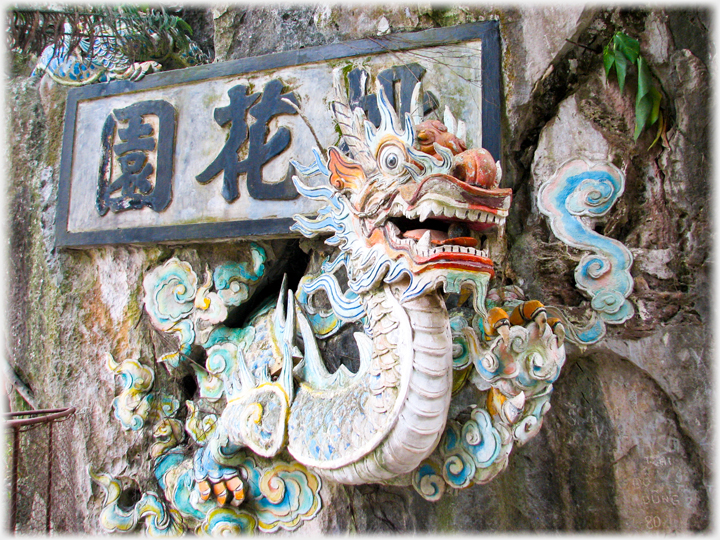
Dragon-graphs
It was Root-Breath, our first ancestor, who created the hexagrams. More dragon than human, his thoughts were almost indistinguishable from natural process itself, he shaped them into hexagrams, these strange dragon-graphs expressed all phenomena in the endless process of change. Language is how we represent change...hexagrams are the first stage in that emergence of language from change...
David Hinton (2015)

Dragon-graphs, less poetically called hexagrams, are those sets of six lines, (some broken, yin tending to female; some solid, yang, tending to male) from which prognostications are derived within China and beyond. Here Hinton is offering a fable about the way
language
 A page which places language in relation to thought.
came to deal with change. Fables and stories give meaning to experiences which often seem
chaotic.
A page which places language in relation to thought.
came to deal with change. Fables and stories give meaning to experiences which often seem
chaotic.
 A page on change in human life.
Dragon-graphs offer a bridge between the order our minds seek, and the confusion to which our senses attest. Giving meaning, building bridges, is the work of consciousness, the
comparator
A page on change in human life.
Dragon-graphs offer a bridge between the order our minds seek, and the confusion to which our senses attest. Giving meaning, building bridges, is the work of consciousness, the
comparator
 To a page introducing the Comparator model of consciousness.
nature of which values accounts; creating networks of
meaning.
To a page introducing the Comparator model of consciousness.
nature of which values accounts; creating networks of
meaning.
 Prominent among which are explanations.
Prominent among which are explanations.
Consciousness welcomes dragon-graphs for the same reason it may welcome the philosophical proposal of phenomena and
noumena
 Noumenon might be seen as a version of this ‘natural process itself’.
- these latter being roughly Hinton’s ‘natural process itself’ - both attempt accounts of what is unaccounted for - of the
novelty
Noumenon might be seen as a version of this ‘natural process itself’.
- these latter being roughly Hinton’s ‘natural process itself’ - both attempt accounts of what is unaccounted for - of the
novelty
 The important process of meeting the new.
The important process of meeting the new.
we meet. Can fables do what philosophers cannot?
The quote is taken from page vii of Hinton’s introduction to his translation of the I Ching, published by Farrar, Straus and Giroux, New York. Hinton, like Blofeld, calls it The Book of Change - singular - see page headed ‘Change’. Currently here are several dozen English translations available.
This dragon inhabits the Thầy Pagoda on the outskirts of Hà Nội.
Above hovering on blue introduces a link: click to go, move away to stay.

Saturday 10th July 2021
 ...guide to this site
...guide to this site